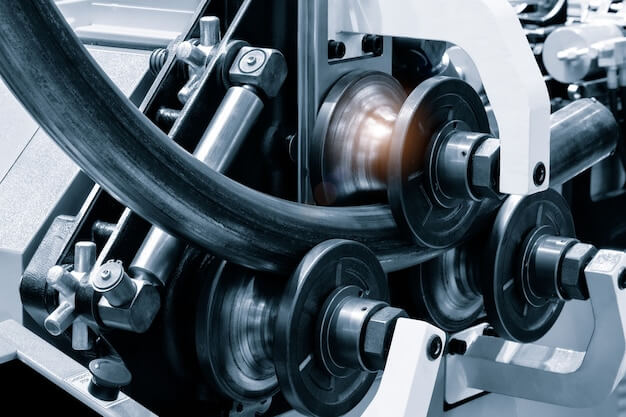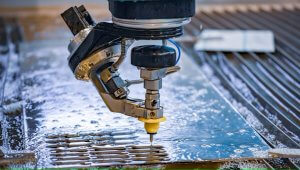Introduction to CNC Machining and Material Choices
CNC machining, also known as Computer Numerical Control machining, is a critical aspect in the field of manufacturing. This process utilizes computerized controls to operate and manipulate machine tools, enabling accurate, consistent and quick production of complex parts across numerous sectors including automotive, aerospace, and medical industries.
Central to the success of CNC machining are the materials utilized. Two popular choices for this process are Acrylic and Polycarbonate. These transparent thermoplastics not only offer individual advantages but also possess unique properties that make them viable options for diverse applications.
- Acrylic often hailed for its superior clarity and affordability, resembles glass in appearance but provides impressive resistance to weathering and can be easily machined and polished for aesthetic purposes.
- On the other hand, polycarbonate – although slightly less clear than acrylic, outshines it in terms of impact strength and durability, making it a preferred choice for more demanding situations.
The final material choice comes down to balancing the pivotal factors like clarity, durability, and machinability against the project needs and specifications.
Understanding Acrylic for CNC Machining
Acrylic, also known scientifically as polymethyl methacrylate (PMMA), is a transparent thermoplastic often used as an affordable alternative to glass. This material boasts of several attributes that make it an excellent choice for Computer Numerical Control (CNC) machining applications. In particular, acrylic’s main advantages center on its clarity and ease of use – Its unsurpassed transparency permits light transmission significantly better than any other plastic, ensuring precise visibility essential in various industries such as signage or medical components. Additionally, compared to many other plastics, the ease with which acrylic can be shaped using CNC machining enables more flexible design capabilities.
- Clarity : Able to transmit up to 92% of white light, surpassing that of all other types of plastic or even glass.
- Ease of Use: User-friendly during the machining process due to its adaptability, flexibility, and lower melting point.
However, one common limitation that should not go unnoticed is its durability. Despite possessing certain degrees of impact resistance, acrylic tends to scratch easily, has limited heat resistance, and lacks chemical resistance – drawbacks that need to be carefully considered when opting for CNC machined parts designed for high-stress operations or harsh environments.
- Durability: Susceptibility to scratches, low heat tolerance, and lack of chemical resistance limit its usage in certain hostile settings.
Understanding Polycarbonate for CNC Machining
Polycarbonate is a thermoplastic polymer that provides an excellent balance of toughness, dimensional stability, and optical clarity in CNC machining. Known for its remarkable impact resistance and robustness, polycarbonate finds extensive application across industries from automotive to aerospace parts due to these attributes.
- The major advantage associated with using polycarbonate in CNC machining primarily centers around its resilience and high strength-to-weight ratio. It exhibits superior durability compared to other materials like acrylic, which makes it less likely to break or crack under stress.
This tenacity against wear and tear certainly contributes to the increased longevity of machined components.
The challenges linked to utilizing polycarbonate in CNC machining emerge from its relatively lower clarity compared to materials like acrylic.
- While polycarbonate offers satisfactory transparency, it may not deliver the same aesthetic appeal as that of clear acrylic in applications where exceptional visual quality is crucial.
However, the trade-off between unmatched durability and somewhat lesser clarity often leans in favor of polycarbonate owing to its overall superior performance characteristics.
In-depth Comparison between Acrylic and Polycarbonate
When comparing acrylic and polycarbonate for CNC machining, it’s important to consider their characteristics and applications:
- Advantages of Acrylic:
- Optical properties and translucence
- Scratch resistance and impact resistance
- Used in lenses, transparent enclosures, and decorative items
- Advantages of Polycarbonate:
- High transparency and heat resistance
- Applications in safety glasses, automotive parts, and medical devices
For professional CNC machining services, consider online CNC service.
Conclusion: Choosing Between Acrylic and Polycarbonate for CNC Machining
In conclusion, when choosing between acrylic and polycarbonate for CNC machining, there are three key factors to consider – clarity, durability, and machinability. For projects prioritizing transparency, acrylic may be the better option due to its crystal-clear transparency feature compared to the slightly less transparent polycarbonate. However, polycarbonate outshines in terms of durability, providing higher impact resistance, making it suitable for more heavy-duty applications. As for machinability, although both materials can be processed using CNC machining, polycarbonate is generally easier to cut without cracking or breaking. There’s no one-size-fits-all answer as the choice primarily depends on specific project needs.
- If superior clarity is required, consider acrylic
- For enhanced durability, choose polycarbonate
- Polycarbonate offers smoother CNC machining
Whatever your decision, remember that an informed choice, considering all the technical principles discussed above will ensure optimal results for your individual project needs.
Related Posts
- CNC Machining Materials Deep Dive: Acrylic vs. Polycarbonate for Transparent Parts
CNC Machining Materials Deep Dive: Acrylic vs. Polycarbonate for Transparent Parts Computer Numerical Control (CNC) machining is a production process that involves the use of computers to control machine tools,…
- Precision CNC Machining of Steel: High-Volume Production
Precision CNC Machining and High-Volume Production As an integral part of modern manufacturing processes, Precision Computer Numerical Control (CNC) machining brings about unmatched accuracy and consistency in the production of…
- Material Versatility in CNC Machining: From Titanium to Thermoplastics
Introduction to CNC Machining CNC machining stands as a cornerstone in the manufacturing sector, enabling the precise creation of parts and components. This process utilizes computer numerical control (CNC) to…








